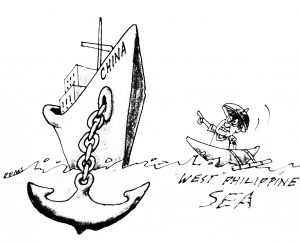Chinese battleships have been a frequent presence in the disputed waters of the West Philippine Sea (WPS), refusing to leave despite increasing tensions with neighboring countries. This is a testament to China’s determination to assert its territorial claims and establish its dominance in the region, even if it means claiming other countries’ territories.
It is important to comprehend China’s long-standing historical and cultural ties to the South China Sea, including the West Philippine Sea. From ancient times, China has viewed this area as an integral part of its territory, based on historical claims and geopolitical interests. China’s deep-rooted sense of nationalism and historical perception supposedly guide its actions in maintaining a strong naval presence in the disputed waters.
China’s intelligence and comprehension of international politics play a crucial role in its decision to keep its battle ships in the WPS. China is aware of the potential strategic advantages that arise from controlling this region, as it encompasses lucrative maritime resources and vital sea lanes. By maintaining a constant military presence, China seeks to secure its economic and energy interests, as well as project its power and influence over neighboring countries involved in the dispute.
Moreover, China’s regard of the power dynamics at play is significant in understanding its refusal to leave the disputed waters. China’s rise as a global superpower has empowered it to challenge the dominance of other countries, particularly the United States. By showcasing its military might in the WPS, China aims to demonstrate its autonomy and ability to protect its interests regardless of international pressure. This behavior underscores China’s strategic thinking and its awareness of its role in shaping the balance of power in the region.
The continued presence of Chinese battleships in the disputed waters demonstrates their historical and cultural claims to the region, their understanding of international politics, and their comprehension of the power dynamics at play. As tensions in the area persist, a nuanced understanding of China’s motivations and objectives is crucial. The problem is, China for its part doesn’t take other claimants’ sentiments into consideration.




